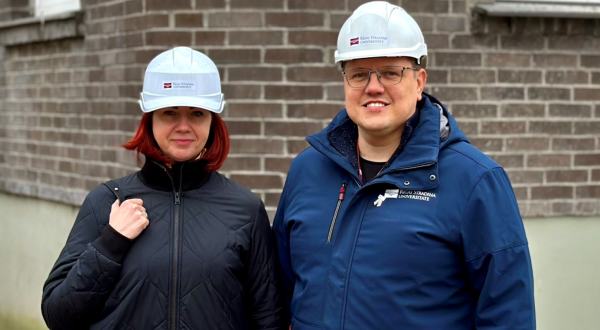Young researcher: on brain ageing
Nauris Zdanovskis is a sixth year student of the study programme “Medicine” at RSU. In cooperation with the Department of Radiology at the RSU Faculty of Medicine, he has carried out research titled “Intravital Volume of Hippocampal Structures of the Brain and MR Volumetric Changes in Brain Ageing” (scientific supervisor: Prof. Gaida Krūmiņa, Head of RSU Department of Radiology; advisor: Dr. psych. Jeļena Harlamova, neuropsychologist).

The research was presented at the final of the "ResearchSlam" competition for Master’s and doctoral students on 15 May and Mr Nauris Zdanovskis took 4th place. The paper was also defended at the RSU Department of Radiology.
Nauris Zdanovskis on his choice of thesis topic: "For the first time I came across neuroscience as a separate discipline at the European Congress of Radiology in 2013. Since then I've been keeping myself updated on current findings and research in neuroscience. Therefore, I had no second thoughts when choosing the field of my research. In future I would like to be engaged in the field of radiology, therefore I approached Prof. Gaida Krūmiņa, Head of RSU Department of Radiology, and we chose the topic for the research together,” says Nauris Zdanovskis (pictured).
The population is ageing. In 2014, the world’s inhabitants aged 65 and over constituted 8% of the total population, and according to forecasts, this proportion will reach 16 % in 2050 [Alzheimer’s disease international, 2014].
Along with the human body, the brain is also ageing. Clinical ageing signs of the brain ageing are cognitive disorders (memory, attention, cognition, reasoning, visual perception and/or apprehension disorders) and dementia (decline of memory, intellect, reasoning ability, social skills and emotional response resulting in an inability to engage in daily activities). Along with the ageing of the population, the occurrence of cognitive disorders and dementia increases. Thus, up-to-date radiological examination methods become an integral part of the diagnostics of the above mentioned disorders, their observation and detection of pathologically physiological mechanisms. By using the opportunities offered by the up-to-date magnetic resonance equipment, the author analysed the volume of hippocampal structures of the brain and compared the indicators of hippocampal volume to the results of tests carried out by the neuropsychologist.
The results of the study give the characteristics of the volume of hippocampal structure (structure of the brain located in the lobe of the brain), differences between left and right brain, their relation to the age, character and intensity of cognitive disorders. On average indicators of the hippocampal volumes were by 11.86 % lower in patients with cognitive disorders. On average, the greatest reduction of the volume was detected in patients with Alzheimer’s dementia (24.19 %), whereas the smallest reduction of the volume was characteristic of patients with mild cognitive disorders (8.16 %). Besides, the relation of hippocampal volume to short-term and long-term memory was observed.
Upon combining the changes of hippocampal volume with the indicators of other structures of the brain, as well as upon analysis of the current research on the mutual relationship between functional and structural combinations, opening avenues for the development of examination protocols for specific and highly sensitive magnetic resonance . It will provide for the differentiating and diagnosing of various types of cognitive disorders in early stages, thus factors that affect the ageing of the brain could be corrected in time.
The research that has been conducted to date can be seen as a small, though useful, contribution to the research of the cognitive abilities of the human brain with objective radiological methods.
Related news
 RSU is growing and developing: major reconstruction underway in the main buildingDevelopment, For RSU Employees, For Students
RSU is growing and developing: major reconstruction underway in the main buildingDevelopment, For RSU Employees, For Students


